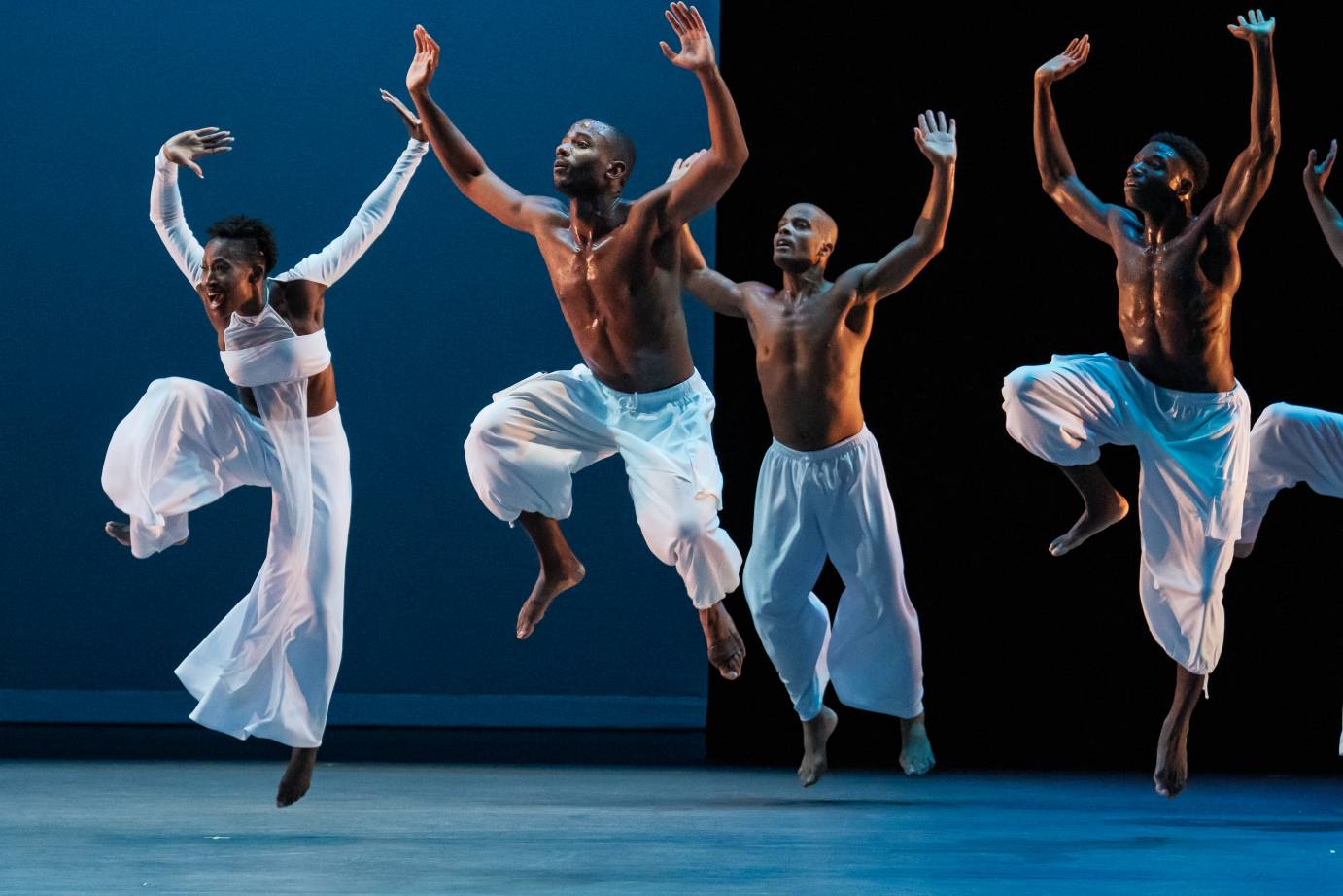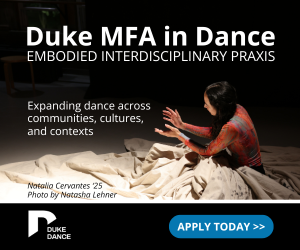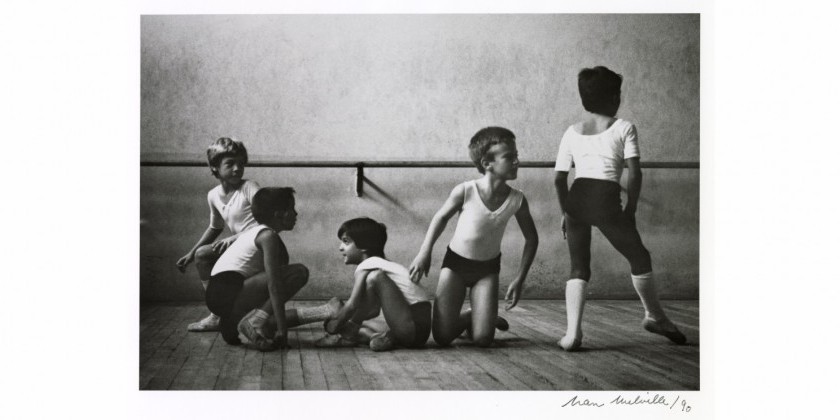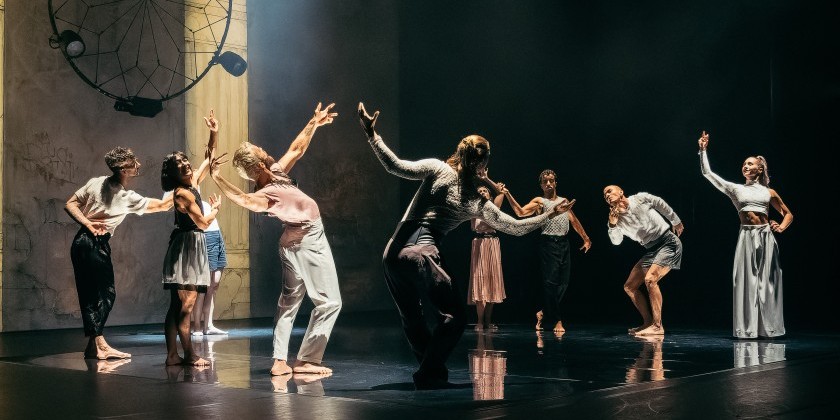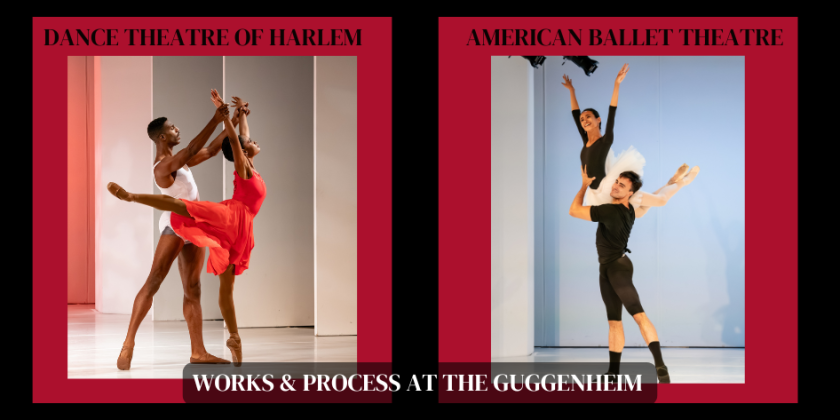IMPRESSIONS: Fall for Dance (Programs Four and Five) at New York City Center

PROGRAM 4 | SEPTEMBER 24 - 25, 2025
BALLET BC
Obsidian Choreography by Bobbi Jene Smith & Or Schraiber US Premiere
DUTCH NATIONAL BALLET │ OLGA SMIRNOVA and JACOPO TISSI
Balcony pas de deux from Romeo and Juliet Choreography by Rudi van Dantzig NY Premiere
SOCIAL TANGO PROJECT
Social Tango Project Choreography by Agustina Videla NY Premiere
PROGRAM 5 | SEP 26 & 27
THE STUTTGART BALLET
THREE FOR HANS Choreography by Hans van Manen
I-LING LIU X
DANCE ON FLUID
… and, or… Choreography by I-Ling Liu
ALVIN AILEY AMERICAN DANCE THEATER
Grace Choreography by Ronald K. Brown
As seen on September 25 and 26, 2025
Programs four and five of the 2025 Fall for Dance Festival at New York City Center continued to reflect the international outlook of the programming team.
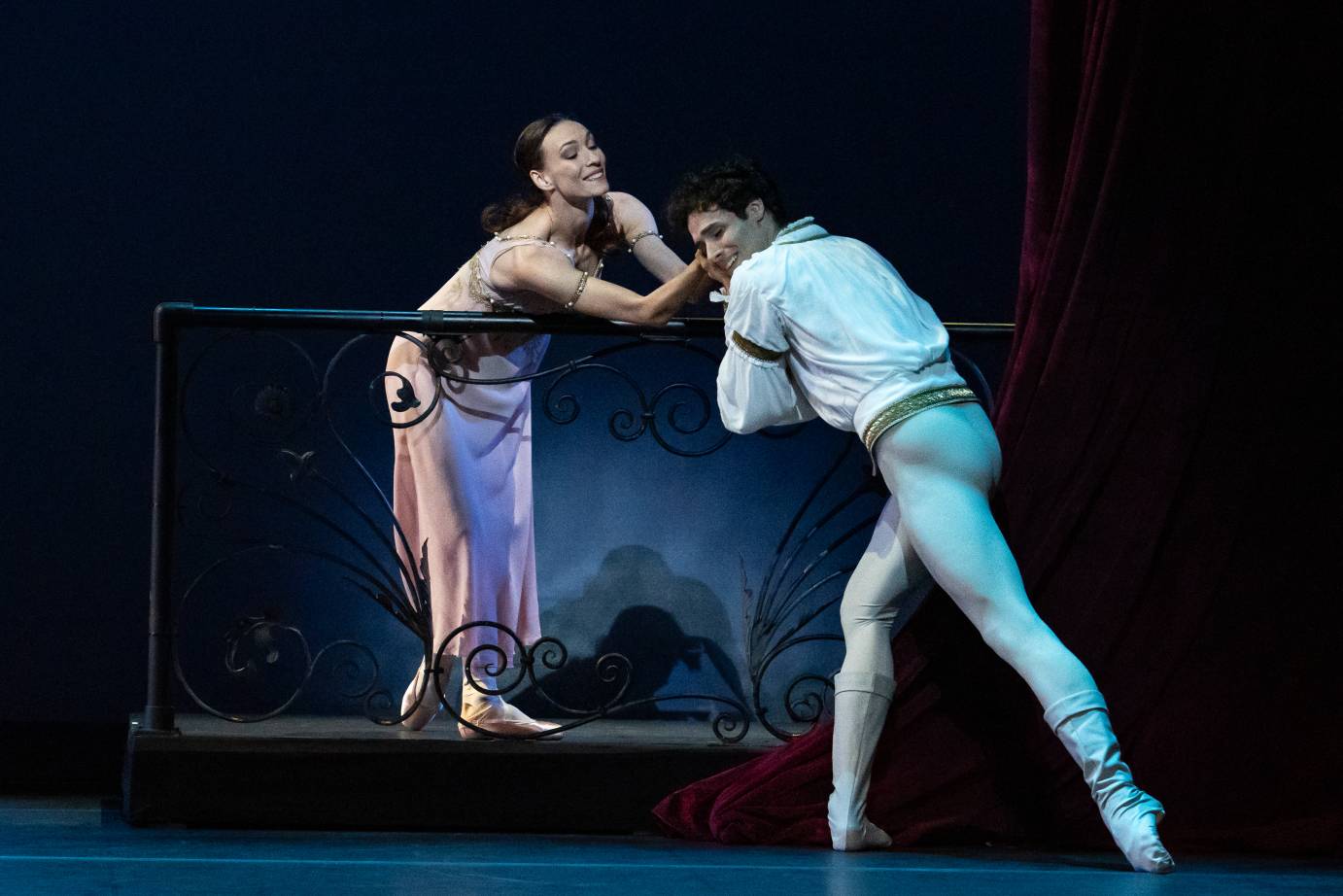
Olga Smirnova and Jacopo Tissi of The Dutch National Ballet. Photo: Steven Pisano
The centerpiece of program four features Russian prima ballerina Olga Smirnova and Italian Jacopo Tissi. Now at home at the Dutch National Ballet, both dancers having left the Bolshoi Ballet in Moscow in response to the war in Ukraine, the pair performed the Balcony Pas de Deux from Romeo and Juliet. Rudi van Dantzig's 1967 choreography had not been seen in New York, where most companies feature versions by Kenneth MacMillan or John Cranko.
While shedding his flowing cloak only to pick it up and disrobe again in a different spot seemed superfluous, Tissi’s passionate dancing and committed partnering proved to excite both Smirnova and the audience. I think of a balcony without stairs to an imagined garden as the equivalent of a spring without flowers, but on the upside not having to run down a staircase gives this Juliet more time to swoon. Van Dantzig manages to create an intimate connection between the two star-crossed lovers without demonstrative, overhead lifts, fluidly connecting step patterns that draw a spectator into a world of young and mostly innocent love.
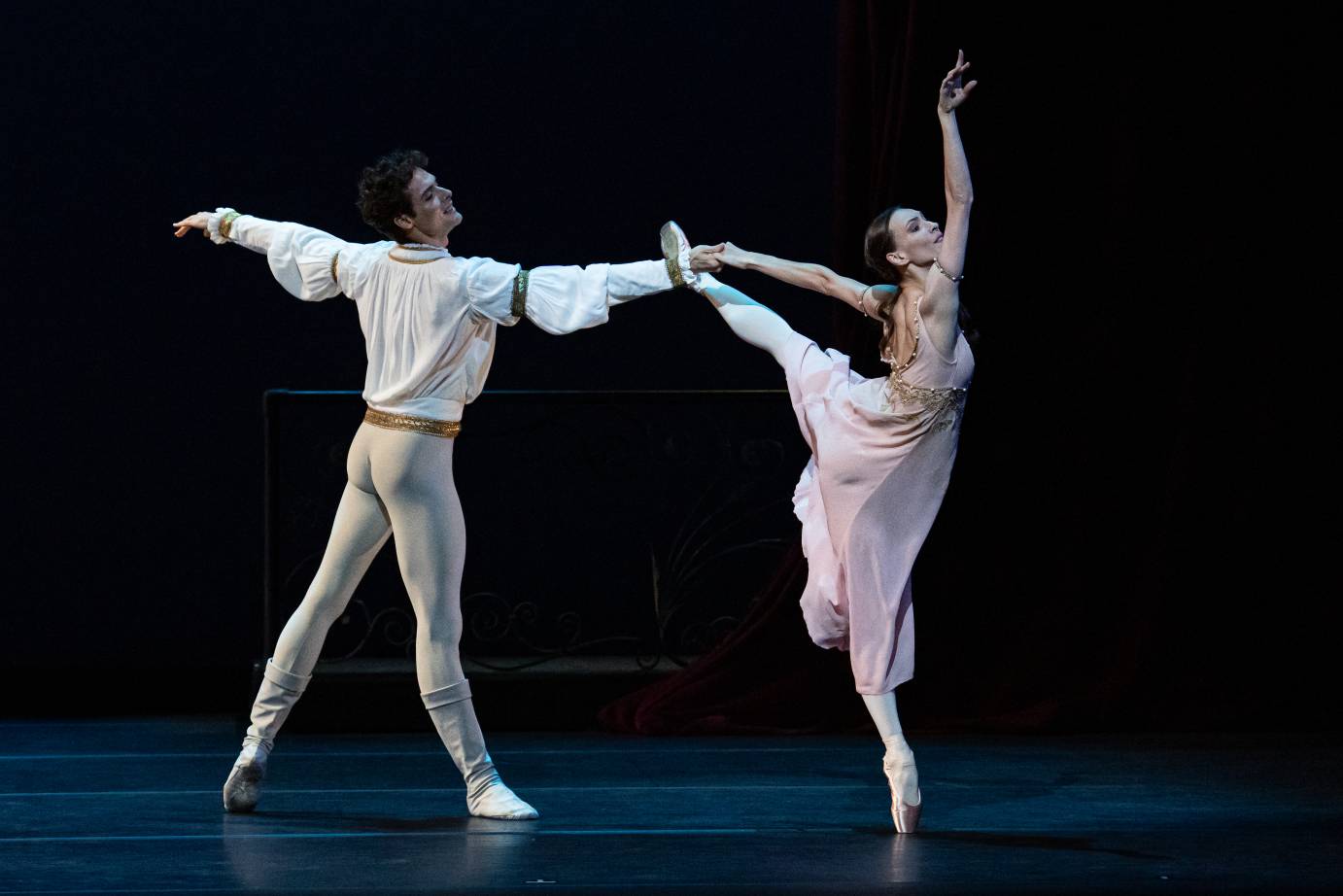
When Tissi does jump, the City Center stage feels small for a moment. Smirnova’s supple spine and her long neck tilted lovingly in his direction tell the story. Wondrously, Smirnova even finds the time to pose at the end of a movement phrase so that her image etches itself into her partner’s and the audience’s memory. It comes off as a slightly precious yet sculptural effect, which might owe to her training in what Russians like to call “plasticity.” If not always emotionally moving, the polished and musical dancing nevertheless impresses. Embedded in the full storyline, the pas de deux would most certainly pull every heartstring. The Dutch National Ballet is scheduled to visit City Center November 20 to 22, 2025.
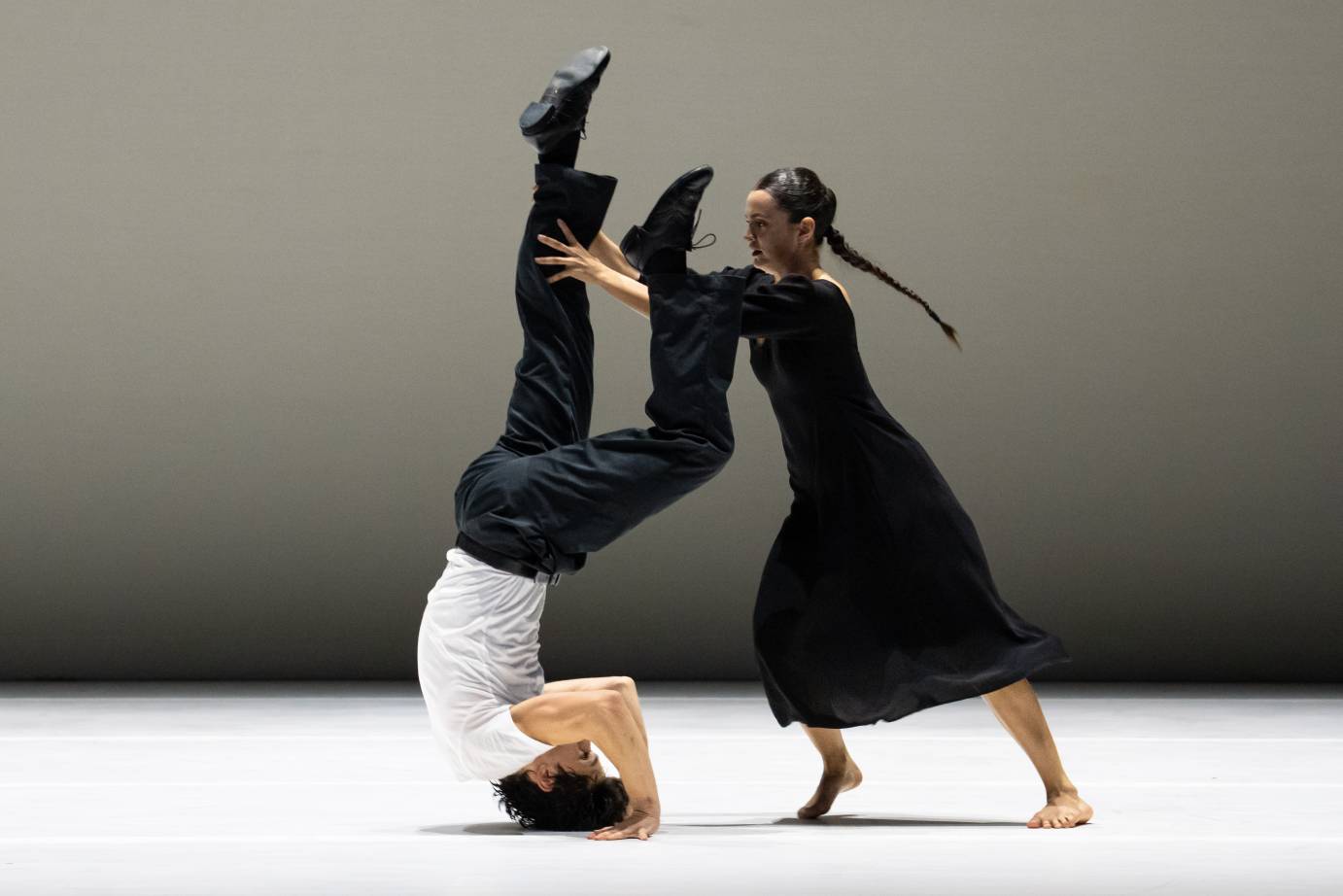
In the New York premiere of Obsidian, by the Ballet BC from Vancouver, pianist Perri Lo, seated downstage left, faces dancers Joziah German, Orlando Harbutt, Eduardo Jiménez Cabrera, Kiana Jung, Pei Lun Lai and Vivian Ruiz on a diagonal. Music by mystic George Gurdjieff and his spiritual disciple Thomas de Hartmann has me think of our state of consciousness and the need to awaken to a higher level. I recall that de Hartmann had studied composition under Arensky and had collaborated with choreographer Nikolai Legat early in his career, but abandon my musings into history as choreographers Bobbi Jene Smith and Or Schraiber have Ruiz walk downstage only to take off her heels. The reference to Pina Bausch may be obvious, but the physical exertions following owe as much to Ohad Naharin.

Ballet BC from Vancouver. Photo: Steven Pisano
With so many references, including men traveling on their knees as in Eastern European folk dances, I am looking for original thought. I find it in the freshness of different groupings that do not seem predictable. However, the men get to dance more freely and eat up the space, while the women generally seem to be held back by their Bauschian dresses. While the performers boldly claim their sexuality in often inventive and sometimes daring movements that range from inverted pretzel hoists to abusively grinding mid-sections, they do so in a traditional, binary fashion. The dancers acknowledge the pianist reverentially as the curtain lowers.
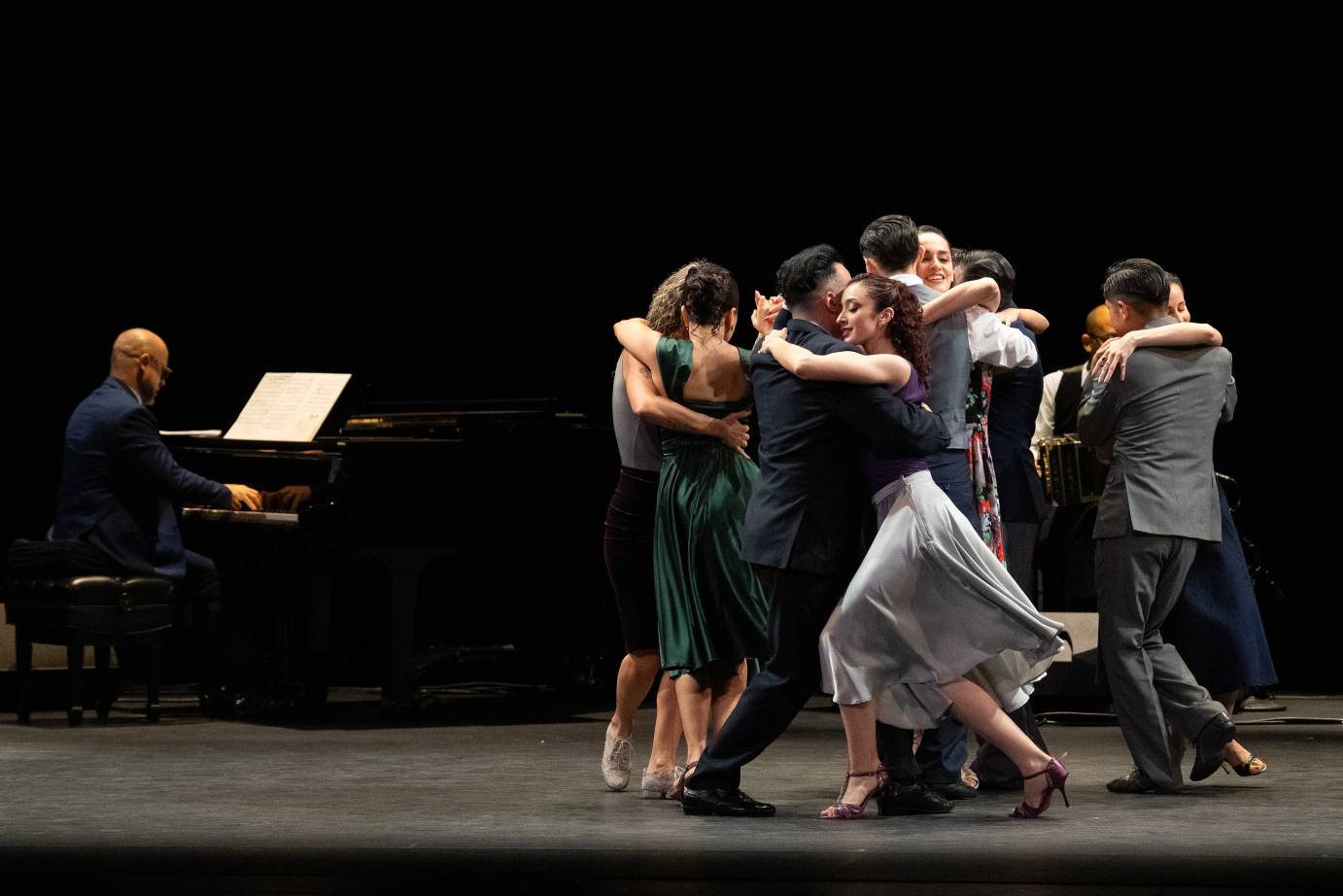
The Social Tango Project made up of professional dancers from Argentina and students from the Tri-state area, works on many levels. Yes, it offers masterful moments of traditional tango, yet it also opens the door to the general public. Dance is in many ways a social movement that connects people. This work by choreographer and artistic director Agustina Videla celebrates both artistry and the art of life. A story of a woman visiting a milonga dance party, who eventually overcomes her shyness and is taken in by the community of dancers, frames this multi-media work. Film clips of Argentine men gleefully sharing how learning to tango changed their lonely lives endears me to the premise.
But there is much more to enjoy: music director, composer, and pianist Fulvio Giraudo, violinist Humberto Ridolfi, and Manuel Gomez playing the double bass, gather around Horacio Romo, whose fabulously expanding and folding Bandoneon gives the evening expansive lungs. At times joined by vocalist Ariel Varnerin, the musicians change the mood on stage from the melancholy of a rainy day to the inspired bliss of a dance party, as the trepidation of the dance students gives way to joy and ecstasy tangoing with one another.
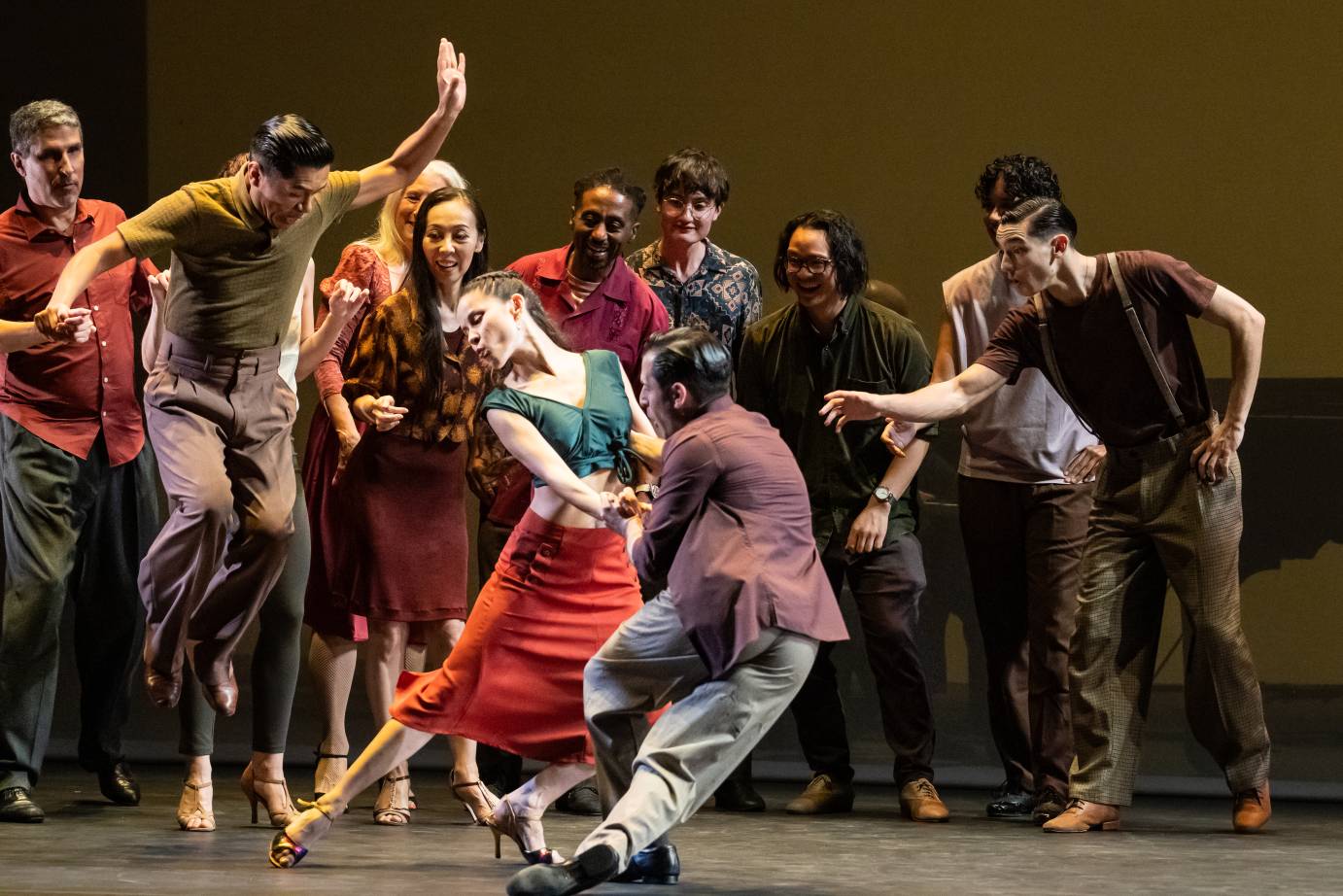
Dancers include Lucia Aspiroz Larrosa, Leonardo Sardella, Lucia Ohyama, Cinthia Diaz, Bruno Mayo, Lily Chenlo, Lautaro Levato, Milagros Quintana, Fernando Gracia, and Melody Gelatti.
Program five opens with Three for Hans, an homage to Dutch choreographer Hans van Manen, who turned 93 in July. Germany’s Stuttgart Ballet, led by John Cranko from 1961 to 1973, was known to nurture young choreographers such as Jiří Kylián and John Neumeier and — after Cranko’s death — William Forsythe.
While the company developed a fruitful collaboration with van Manen under the directorship of Marcia Haydée, it is not clear why the company’s current director, Tamas Dietrich, selected these three short pieces originally choreographed for the Dutch National and Nederlands Dans Theater to showcase the Stuttgart Ballet in New York.
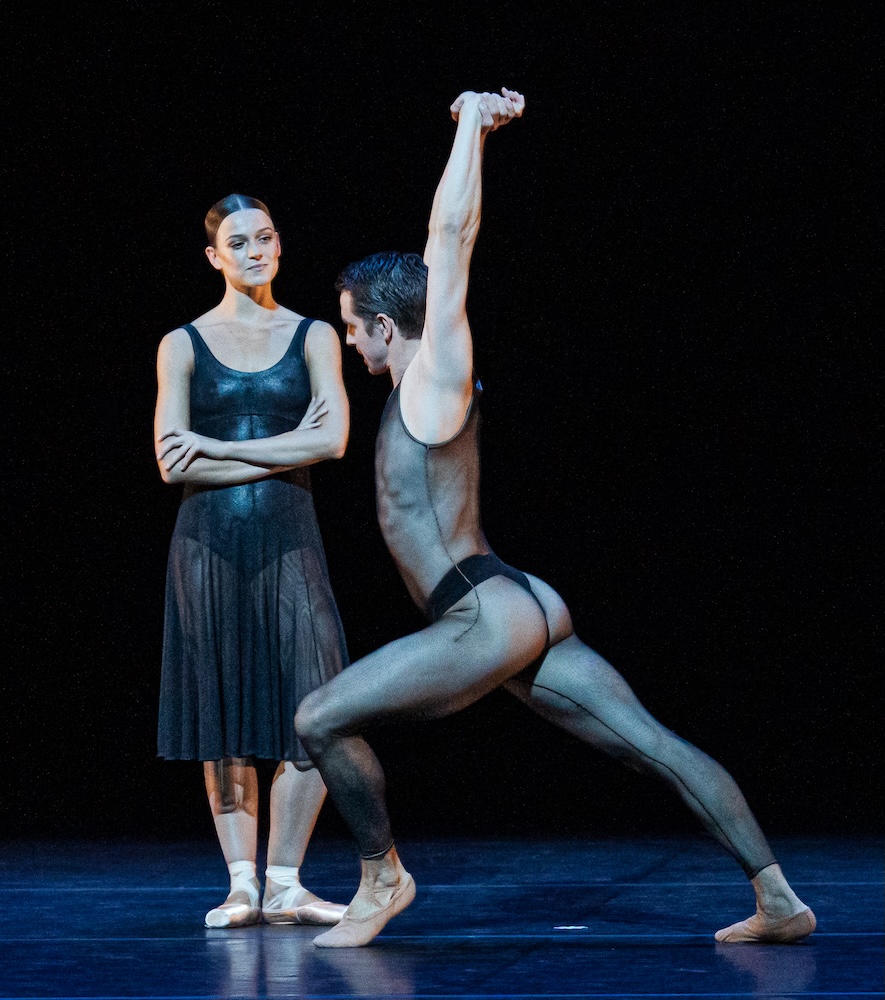
Mackenzie Brown and Martí Paixà of Stuttgart Ballet. Photo: Steven Pisano
Mackenzie Brown and Martí Paixà at first compete with one another before a tender adagio brings the neoclassical Two Pieces for Het to a close. Circling one another with flexed feet doesn’t amount to revolutionary invention, but these etudes to music by Estonian composers Erkki-Sven Tüür and the overused Arvo Pärt hold one’s interest as they are executed with poise.

Mackenzie Brown and Martí Paixà of Stuttgart Ballet. Photo: Steven Pisano
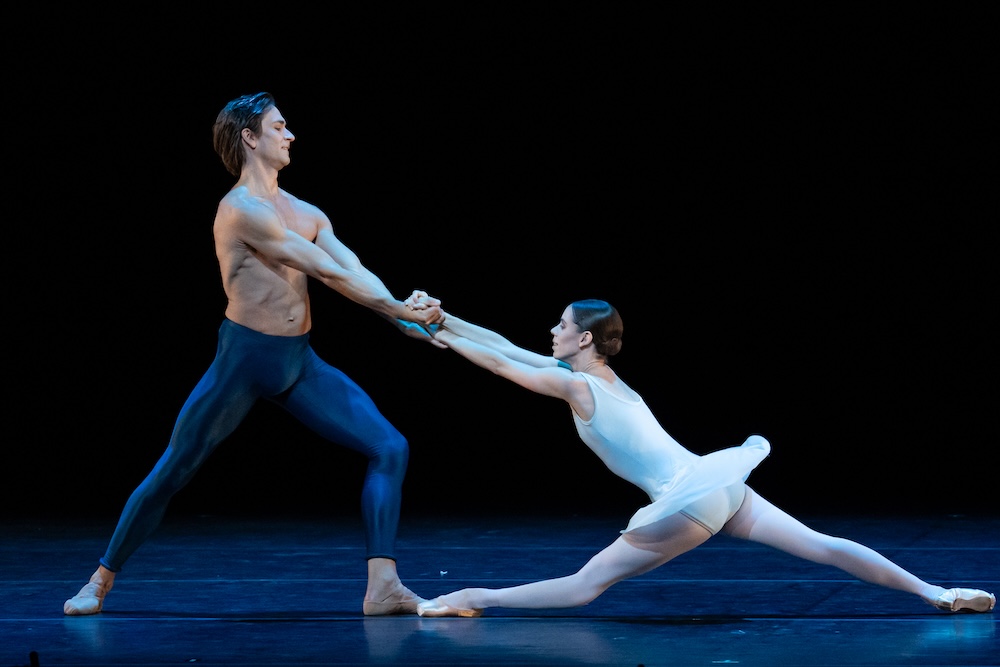
Friedemann Vogel and Elisa Badenes of Stuggart Ballet. Photo: Steven Pisano
Erik Satie's musical chestnuts accompany van Manen’s Trois Gnossiennes. Hunky Friedemann Vogel heroically manhandles flexible Elisa Badenes. If there should ever be a commercial made about male and female archetypes in ballet, I might suggest this dreamy duet with exactly this cast, while I question my own critique of binary stereotypes from the night before.
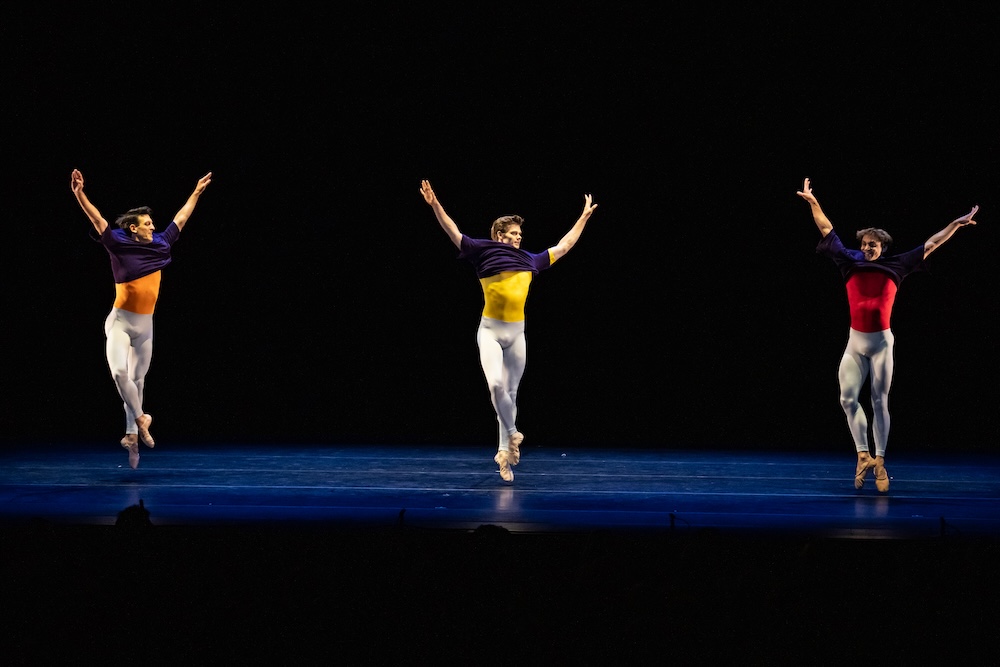
Fabio Adorisio, Henrik Erikson, and Matteo Miccini step on the gas pedal and dazzle with fast footwork to Johann Sebastian Bach's “Partita No.1 in B minor for violin” in the curiously titled Solo. These chamber works might not amount to much, but they are skillfully danced and entertain a grateful audience.
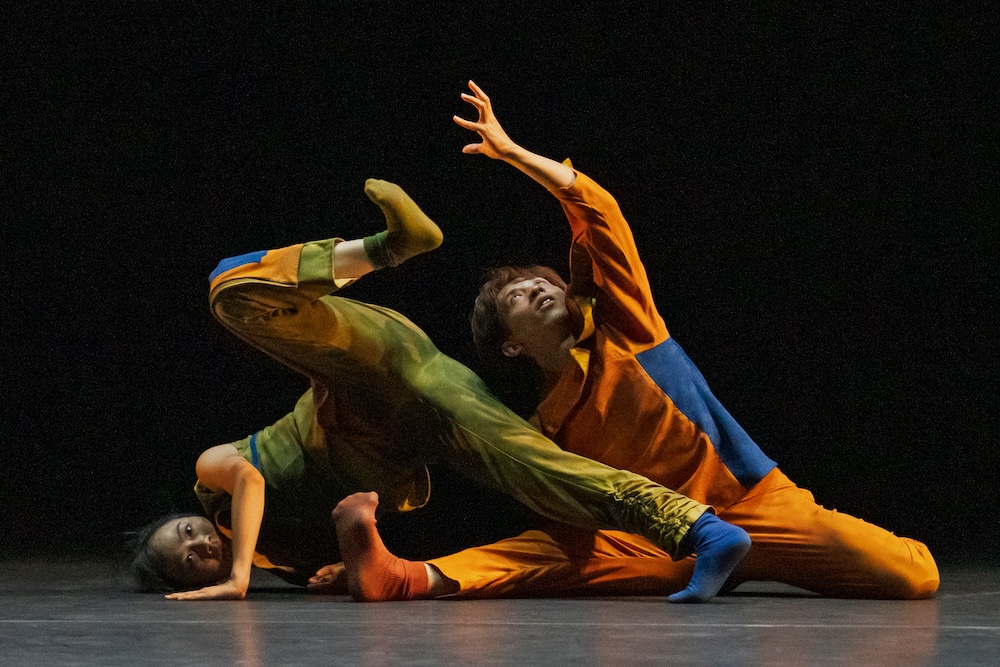
I-Ling Liu X Dance on Fluid presents a duet in silence. The man and woman pull off partnering moves that don’t always have a traditional male/female power structure. I truly enjoy the helter-skelter physicality and ambivalence of …and, or… for about ten minutes, but then I simply endure the repetition that goes on for no apparent reason. As danced by Jyun-Yi Lin and Wei-Ting Hung, there are memorable and surprising moments, as when he runs at her full speed and she catches him and holds him horizontally across her body. How does she not fall, at this sudden impact?
While the physicality is daring, unfortunately, the duet is laden with gestural clichés. Lazy imagery like a pat on her bum — which she obviously finds annoying — switches her momentarily into ninja mode and she is ready to slice him to pieces. When a motif like this one repeats, it loses its effect. I applaud these warriors, but wish they could have found peace sooner.
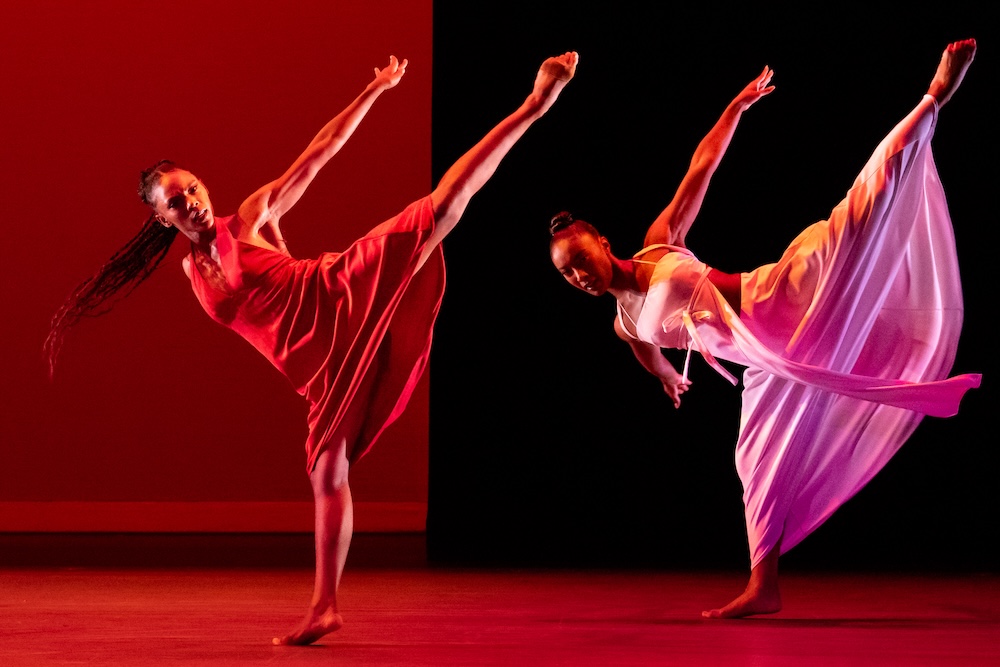
Choreographer Ronald K. Brown's Grace danced by the Alvin Ailey American Dance Theater brings the festival to a celebratory spiritual close. Even if the current cast members occasionally walk as if they were posing on a runway, the overall feeling of being transported to a higher plane still does transmit. I miss the grace of dancer Asha Thomas, who led her flock to enlightenment when she took over the lead role shortly after its premiere (1999). Thomas's dancing awakened and lifted physicality, consciousness, and spirituality to a level on which I can imagine Gurdjieff and Jesus dancing a pas de deux. The Ailey company’s Christmas season is scheduled to open at City Center on December 3rd 2025.
